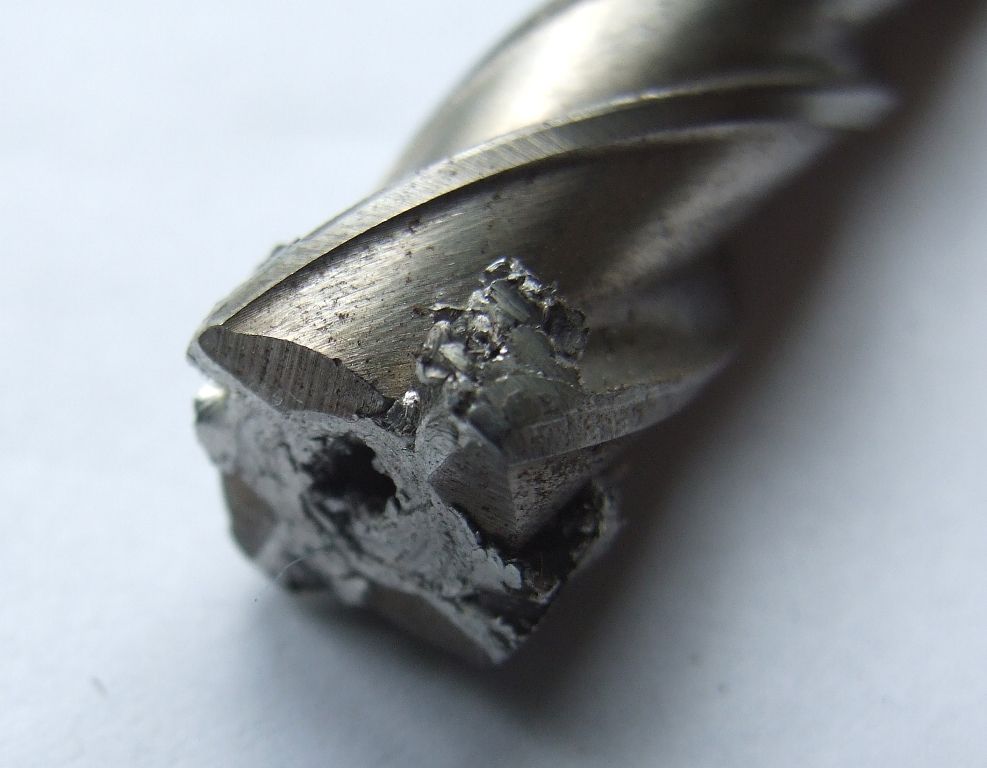Quick review of coatings.
Any hardenable steel can be used to cut machinable metals. Ordinary tool-steel works well unless it overheats, unfortunately rather easy to do. The Victorian's did well enough with tool-steel cutters, but they cut slowly with much flood cooling.
HSS revolutionised cutting because HSS alloys resist heat far better than Carbon steel. A plain carbon steel loses hardness below 200°C, whereas some HSS are still hard at red heat, about 550°C. Later versions of HSS are also tougher than plain steel, thus HSS can remove metal 5 or 6 times faster, and stay sharp for longer. Good though it is, HSS isn't the best possible cutting material.
Carbides are harder and even more heat resistant than HSS. They can remove metal about 5 or 6 times faster than HSS. High metal removal rates are a major advantage in manufacturing, less so in a home workshop. We don't get the full benefit of carbide and for many purposes HSS is fine, and it can be ground to special shapes.
The cutting performance of both HSS and Carbide can be improved by coating them in something harder and smoother.
Titanium Nitride (TiN) is the original gold coloured coating. Under the same conditions TiN coated HSS should last about 3 times longer than plain HSS.
Titanium Aluminium Nitride (TiAlN) is smoother and harder than TiN, plus it can withstand higher temperatures, and it age hardens.
Titanium Aluminium Silicon Nitride (TiAlSiN) is super-hard.
Coatings are extremely thin and don't alter the tool dimension. They're not particularly useful on tools reground by the user. Coatings aren't magic because cutting performance always depends on the underlying tool. A well-made coated cutter will last longer than the same cutter left plain, but a badly made cutter coated in TiN is still a badly made cutter. Nothing to stop dodgy manufacturers spraying cheap nasty poorly ground Carbon Steel twist drills with TiN. Beware very cheap tools!
Although I don't go out of my way to buy coated tools, I don't avoid them either. I mainly buy mid-range cost from reputable suppliers without worrying about whether or not they have coatings. Most of my twist drills are uncoated (from Tracy Tools), and for my purposes they appear to work as well as a TiN coated expensive brand.
Self taught, poor technique turned out to be my main problem. My teacher was an ignoramus. Took me a while to develop a practical feel for what's right and wrong across a range of materials. Often a narrow gap between a tool cutting nicely and the same tool struggling and going blunt. Letting cutting tools rub quickly ruins them, coated or not. So does over enthusiasm, failing to clear swarf, over-heating, wrong rpm, and failure to lubricate appropriately. Brass prefers a sharp new drill, and using drills on steel spoils them for brass. Experience matters!
I feel learning how to cut is more important than throwing money at expensive tooling. A set of drills I thought were rubbish as a beginner are actually quite good – apart from the half-dozen I wrote-off…
Dave
John Reese.





